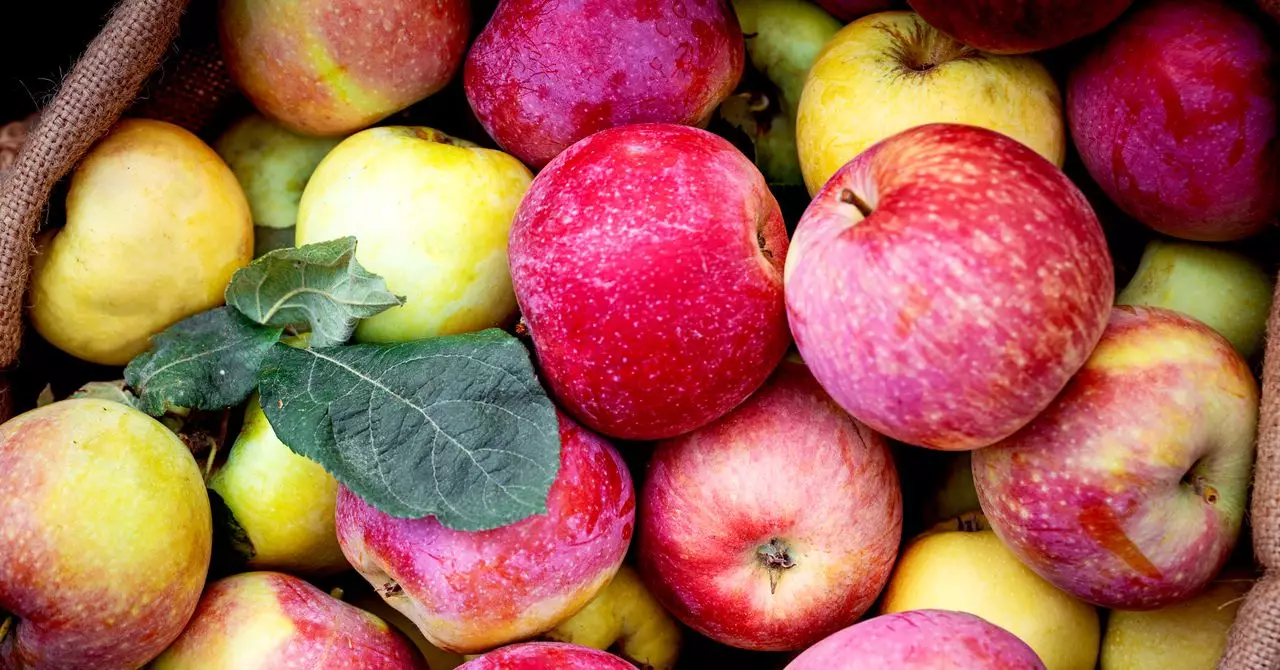When one thinks of quintessential American comfort food, apple pie often comes to mind. Yet, lurking beneath this domestic classic is an intriguing twist: the apple juice that accompanies many lunchboxes and family dinners is largely imported. This not only raises concerns about food sourcing but also speaks volumes about the current state of trade relations, particularly the economic ramifications of tariff policies introduced during the Trump administration. As the market for apple juice faces upheaval, the implications reach far beyond the dining table, affecting supply chains and consumer prices.
The Apple Juice Supply Chain: A Global Perspective
At the heart of America’s apple juice consumption is an ironic truth: approximately 430 million gallons of apple juice are imported each year, dwarfing the 16 million gallons that the United States exports. The majority of this juice has traditionally come from China, a country not typically recognized for apple cultivation. However, in the 1980s, Chinese farmers began diversifying their agricultural practices, leading to a rise in apple production. Fast forward to today, and that very industry is facing significant disruptions largely due to the changing political landscape and trade policies.
The US Apple Association, an organization representing domestic apple farmers, has highlighted the consequences of shifting trade dynamics. Executive Christopher Gerlach notes that the wholesale price of apple juice concentrate has surged by 33% within a year, a trend that is poised to climb further. What’s more, these rising costs do not just affect juice; concentrate is integral to a myriad of products, including mixed-flavor juices and even baby foods. This multifaceted reliance makes the implications of tariff policies even more profound.
Tariffs and Trade: A Double-Edged Sword
The tariffs imposed by the previous administration have played a pivotal role in reshaping consumer access to apple juice. A staggering 145% tariff on imports from China has abruptly elevated prices and complicated supply chains for a host of goods. It’s fascinating to contemplate the broader ramifications; the price hikes do not merely impact juice prices but extend to everything from baby products to holiday decorations. While one might view tariffs as a means to protect domestic industries, the reality is often more convoluted, with consumers bearing the brunt of inflated prices and diminished selection.
Notably, Turkey has emerged as a formidable competitor in this landscape. Following the imposition of tariffs, a shift has occurred, with US imports of concentrated apple juice from Turkey skyrocketing while those from China have plummeted. In a dazzling twist of fate, Turkey accounted for 39% of US concentrated apple juice imports last year, overtaking China’s 31%. The rapid pivot to Turkey underscores how quickly supply chains can adapt in response to geopolitical changes—an aspect that market analysts and consumers alike should scrutinize closely.
Consumer Behavior: Price Sensitivity and Preferences
What does this sea change mean for the average consumer? Price sensitivity has never been more pronounced. Families accustomed to accessible and affordable apple juice may find their shopping lists adjusting as prices climb. Choices might shrink, and brands could alter formulations or ingredient sourcing in light of soaring costs. Crucially, the repercussions extend beyond mere beverage choices, reverberating through fishing, farming, and packing sectors that rely on stable supply chains.
The emotional connection to apple juice, often seen as a familiar and wholesome staple, may become fraught as consumers wade through new pricing structures and sourcing narratives. The juxtaposition of a cherished family product that now bears the weight of international relations invites a broader dialogue about what it means to support domestic agriculture without compromising on choice and affordability.
Navigating the labyrinth of imported apple juice and the rising costs posed by tariffs provides a unique glimpse into the complexities of trade policy and consumer choices. As we sip our apple juice, now increasingly tinted by global politics, it’s vital to consider the implications of these shifts on our collective dining experiences and economic realities. The once simple act of enjoying a classic American beverage has transformed into a perplexing intersection of agriculture, trade, and consumer sentiment, inviting us to remain critical and informed as we chart our paths through these evolving dynamics.

